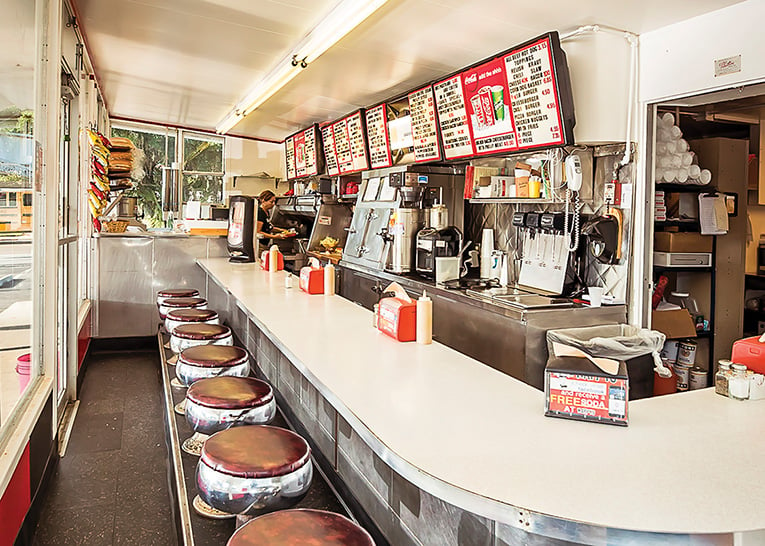Conservation Guide: Building Back Safer After Hurricane Ian
During Hurricane Ian, Babcock Ranch never lost power and sustained minimal damage. Is Babcock Ranch the future of building back safer?

Babcock Ranch, which calls itself America’s first solar-powered community, is located approximately 12 miles inland from Fort Myers. (PHOTOS COURTESY OF ROBERTO GONZALEZ & OUC, BABCOCK RANCH)
Hurricane Ian started pouring its wrath into Florida on a Wednesday afternoon during late September. Winds of 150 mph uprooted trees and shredded power lines, while a storm surge of 15 feet from the Gulf of Mexico inundated Fort Myers Beach.
After decimating parts of the west coast, Ian churned ruthlessly across Central Florida, all told leaving at least 127 people dead and an estimated $67 billion of damage in its wake. Millions were left without electricity for days, if not a week or more.
Ian eventually made its way up the East Coast, thoroughly dousing the Carolinas, before expiring on a Saturday in southern Virginia.
Considered a one-in-500-year event, Ian almost unbelievably was followed up some six weeks later with Nicole. Swooping in the from the East Coast near Jupiter, the 400-mile-wide hurricane dumped up to seven inches on parts of Florida before making its way to the panhandle.
Tens of thousands lost power, flooding was rampant and beach erosion was epic along the Atlantic Coast, chewing away pieces of the iconic A1A highway and dumping waterfront houses into the water along Daytona Beach Shores and Wilbur-by-the-Sea. At least five storm-related deaths were reported.
What is going on? Is this the new normal? A nearly Cat 5 hurricane (157 mph sustained winds) followed in short order by a Cat 1 (74 mph)?
The answer appears to be yes, according to risk managers and climate scientists.
“Climate change is making these storms increasingly frequent, and more intense,” said Michael Lopes, a spokesman for the First Street Foundation, a Brooklyn, NY based nonprofit that provides property-level risk information.
Lopes puts it this way: “A changing climate makes storms stronger, and more likely. The issue is that what was once a 1/100 year return period storm is becoming something closer to a 1/50 year return period storm, and storms that are today 1/250 are likely to become a storm with the intensity of a 1/100 storm today. The ‘return period’ in question is simply a measure of the time it would take for a storm of similar strength to return.”
Most of the scientific community believes climate change—or, more accurately, global warming—is the result of man’s insistence on burning fossil fuels. Regardless of the ultimate cause, climate change is real and not going away, said Chris Emrich, a hazard geographer and emergency manager at the University of Central Florida.
“We presume some things are going to get worse. Are people suffering right now? The answer is yes,” Emrich said.
If so, what can we do to minimize the peril of global warming in the days, months and years ahead? Are there any lessons we can take from the past hurricane season, which, traditionally starts in June ends in November, this season bookended by Tropical Storm Alex on June 4 and Nicole on November 9.
Syd Kitson, a former professional football player turned developer, may have some answers.
He is responsible for Babcock Ranch, a community of 2,000 homes in both Charlotte and Lee counties that is about a 45-minute drive from the beaches of Fort Myers and Sanibel, close to where Ian came ashore.
Fort Myers Beach, Sanibel, Boca Grande and nearby locales were devastated by Ian and its accompanying storm surge. More than 400 buildings in Fort Myers Beach alone were either leveled or severely damaged, according to an aerial survey by the New York Times. More than 50 people died in Lee County, most of them drowning victims near the coast.
Babcock Ranch, conversely, came through virtually unscathed. No one lost power. No homes were flooded. Most residents watched Ian’s destruction live on television. The day after Ian blew through, people were playing on outdoor pickle ball courts.
“It can be done. You can build a resilient community,” said Kitson, who lives in Babcock Ranch and was home during the hurricane.
Kitson said he drove around Babcock Ranch almost hourly to check on the property until the winds threatened to run his car off the road. Between the windows of his home and television, he tracked Ian all night.
“It was hard to watch,” he said.
He lists a number of keys for the success of Babcock Ranch, where ground was broken in late 2015 and the first home was finished in 2017.
First off, all homes and buildings sit at least 25 feet above sea level and are well east of any coastal storm surge, significantly reducing the chances of water or flood damage. All structures are built and rated to withstand winds up to 145 mph. Babcock was subjected to gusts in that range throughout the night as Ian blew ashore.
In addition to ordering the digging of numerous retention ponds, Kitson had the roads and culverts designed to follow the natural water and drainage flows of the area. So, when the ponds filled, the overflow went into channels between homes and buildings and into streets that dumped the water into undeveloped areas.
The community also is powered by 700,000 solar panels, which can create enough clean energy to run nearly 30,000 homes. The solar energy is hooked into storm-hardened infrastructure run by Florida Power & Light; i.e. underground lines connected to substations fed by lines attached to sturdy concrete poles, not wood.
Ian, Kitson said, did not displace one solar panel.
The landscaping at Babcock Ranch also played a role, Kitson said. He had native plants put in—palms, oaks and the like—that can better withstand Florida’s increasingly extreme weather patterns.
Mark Wilkerson, one of Babcock Ranch’s first homeowners, said he stayed awake most of the night watching Ian blow through with sustained 100 mph winds and gusts of 140 mph.
“It was quite unnerving,” said Wilkerson, a 64-year-old independent solar service provider.
Babcock Ranch, he said, “certainly has lived up to what Syd Kitson intended it to be.”
Closer to home, in metro Orlando, Ian caused massive flooding and power outages. Rather than a treacherous display of high winds, Ian was more of a rain event when it reached Central Florida, dropping as much as 17 inches in spots.

After taking a direct hit from Hurricane Ian, Babcock Ranch suffered no loss of power, no flooding and minimal damage. (PHOTOS COURTESY OF ROBERTO GONZALEZ & OUC, BABCOCK RANCH)
Think of hurricanes Frances and Jeanne instead of Hurricane Charley, for those who have lived in Central Florida for a while. Back in 2004, Central Florida was struck directly by three hurricanes within six weeks. A fourth, Ivan, hit the panhandle and Alabama.
Frances and Jeanne were slow moving, dropping as much as 15 and 7 inches of rain, causing widespread flooding. Charley, a much more compact hurricane, ripped through with 100 mph winds, shearing trees and power lines. An estimated 20,000 trees were lost just in Orlando.
But as much water as Frances, Jeanne and Charley dumped on Central Florida, none of the three caused as much flooding as Ian.
Three water lift stations in Orlando were so overwhelmed with water that they stopped functioning. Water, mixed with all types of waste, bubbled up from numerous sewer manhole covers.
Well-traveled roads such as Edgewater Drive and U.S. Highway 17/92 by Loch Haven Park were under several feet of water for several days after Ian passed through. Lake Eola in downtown Orlando rose onto Robinson Street before falling back a day later.
Lakes Davis and Cherokee in the Delaney Park neighborhoods just south of downtown merged into one massive lake for a while.
The Little Econlockhatchee River overran its banks and flowed into homes in neighborhoods around University of Central Florida. Lake Monroe flooded the riverwalk in downtown Sanford, splashing over the sea wall, across Seminole Boulevard, into parking lots.
“It was so much water that it overwhelmed the system. Rainwater has to go somewhere,” said Corey Knight, Orlando’s public works director.
Making matters worse in Orlando was that some residents pulled off the sewer lids in the roads to let the water drain. The problem with that was it just added more water to an already failing network.
“Our issue was everything was full,” said Howard Elkin, Orlando’s division manager for streets and storm water.
The Orlando Utilities Commission (OUC), which serves nearly 270,000 customers in Orlando and Osceola County, reported “localized flooding impacted homes and businesses more than ever experienced,” according to a statement released by OUC spokesman Derek Hudson.
Nearly 200 residential customers were impacted by flooding for “an extended period after Ian passed,” the statement said. Among the neighborhoods with the worst flooding were Ventura, Delaney Park, and Jade Isle in St Cloud.
More than 97,000 of OUC’s customers lost power during Ian. The primary cause was small-to-medium-size limbs contacting overhead lines. Everyone was back on line within six days, Hudson said.
Power was restored after OUC crews replaced 3.6 miles of wire cable, 24 transformers, and 20 poles. Prior to Ian’s arrival, OUC brought in 276 mutual aid workers–162 line techs (all but 21 from out of state), 49 tree trimmers from other states and 65 locally sourced damage assessment personnel.
The lessons of Ian and, to a lesser extent, Nicole are really common sense.
Homes and condos should be built on high ground and away from coastal flooding, like Babcock Ranch. That should not a problem in Orlando since it sits ear the center of the state, though there are low-lying areas throughout the region.
One way to determine if your house is on high enough ground in Central Florida is to know the property’s history. If citrus trees once occupied the land, it’s likely in good shape. Growers planted their trees in dry, sandy and preferably uphill soil, which oranges prefer.
Houses built on old cattle grazing land could be problematic. Cows don’t mind wet feet.
Of course, roughly 16 million Floridians, or three-quarters of the state, reside in coastal counties, meaning every hurricane or tropical storm poses a potential danger.
UCF’s Emrich recommends building homes on stilts or well above the ground, as was once popular. Go underground on power, all the way to the substation, he said.
Those things are easier to do when starting a community from scratch, like Babcock Ranch. They also take more money, Kitson said.
“Does it cost a few more dollars? Yes,” he said. “Does it cost a lot more? No, not compared to the amount of damage that can occur.”
But Orlando has numerous long-established neighborhoods, most served by overhead power lines tethered to wooden poles. It’s no coincidence that they were among the hardest hit by Ian.
Approximately 65 percent of OUC’s system is underground. The problem with underground power is that it’s almost prohibitively expensive to retrofit, the cost estimated as high as 10 to one compared to overhead lines, depending on the location.
Back in 2017, homeowners in the Lake Lawsona historic district, which includes the trendy Thornton Park just east of downtown Orlando, asked OUC about the cost of switching from overhead power to underground.
The answer was about $30,000 a home, according to published reports from the time. The conversion never occurred.
The next best solution to under grounding is trimming tree limbs away from power lines, said Emrich, the project manager of a website, www.HazardAware.org. On that site people can type in their address and see how vulnerable their homes might be to flooding and winds, among other risks.
What Emrich, Kitson and other experts do not recommend is returning a damaged structure to the way it was before the hurricane.
“That just doesn’t make sense,” Kitson said. “We’re just going to have to continue to think about it.”
Knight said Orlando has launched a city-wide study that should take about six months to complete looking for ways to lessen the impact of future hurricanes as powerful as Ian.
But Paul Deuel, Orlando’s assistant division manager of water relocation, warns it may be impossible to avoid some flooding from major hurricanes.
“You can’t design a system to carry that much water so quickly,” he said.
Knight did offer one possible solution: “Pray for less rain.”
Home | Building Back Safer After Hurricane Ian | The Florida Wildlife Corridor | 10 ways to connect (with) the Florida Wildlife Corridor | The Tree That Was a Testament to Time | SeaWorld Expands Manatee Care Facility | 10 Fun Facts about the Manatee | Conservation Guide Map








